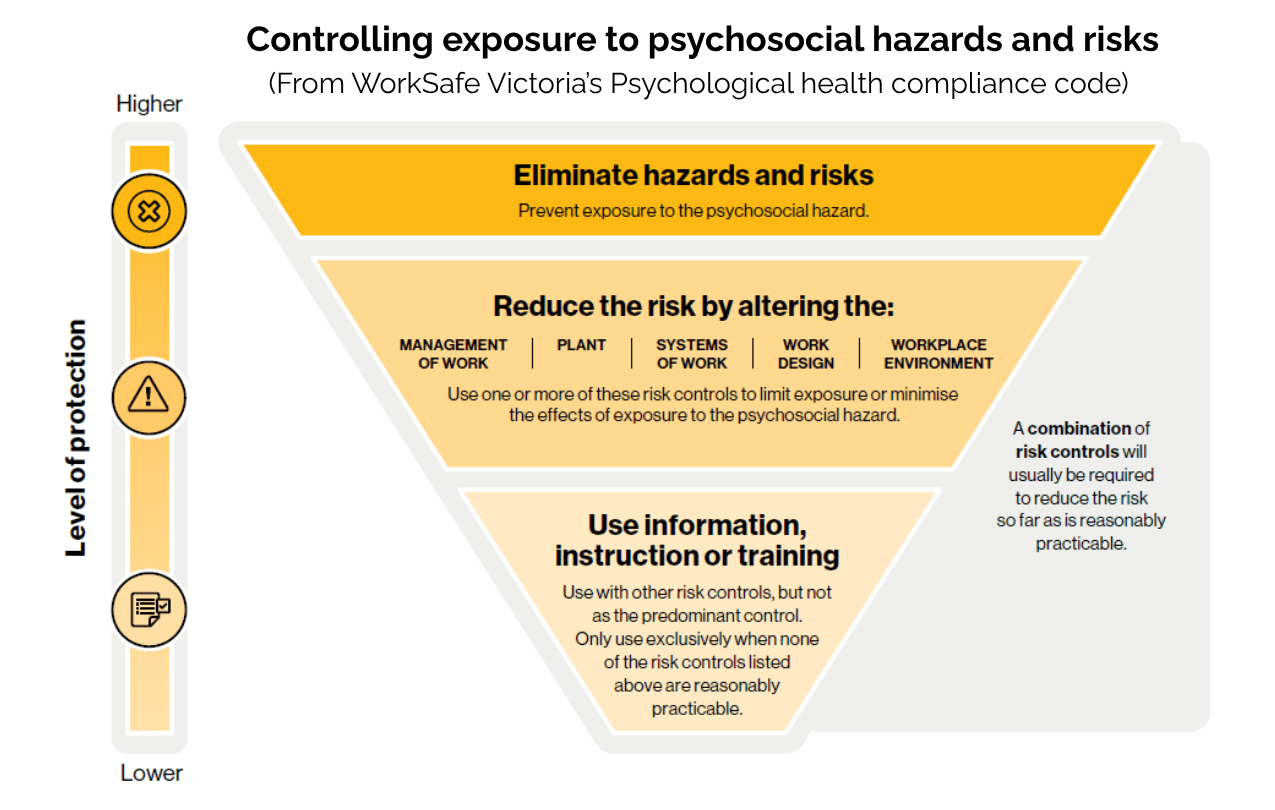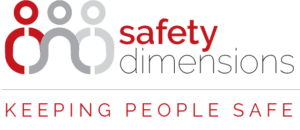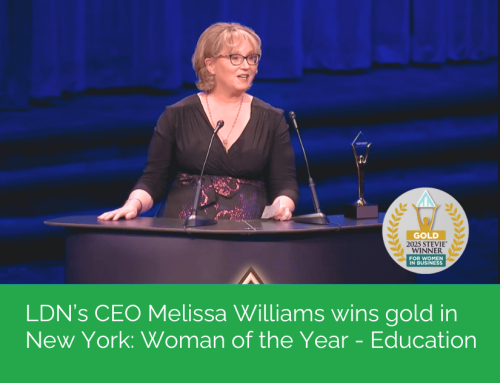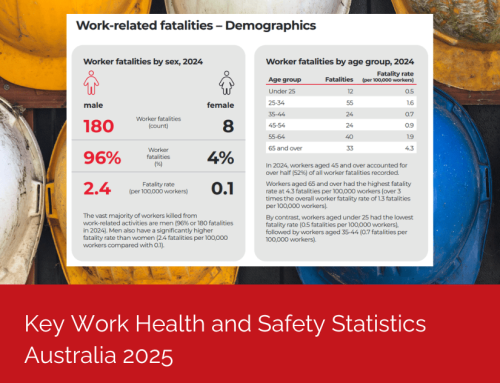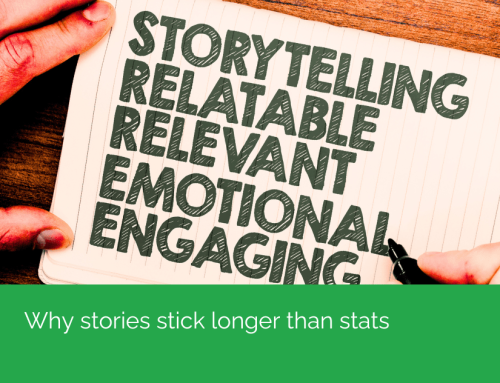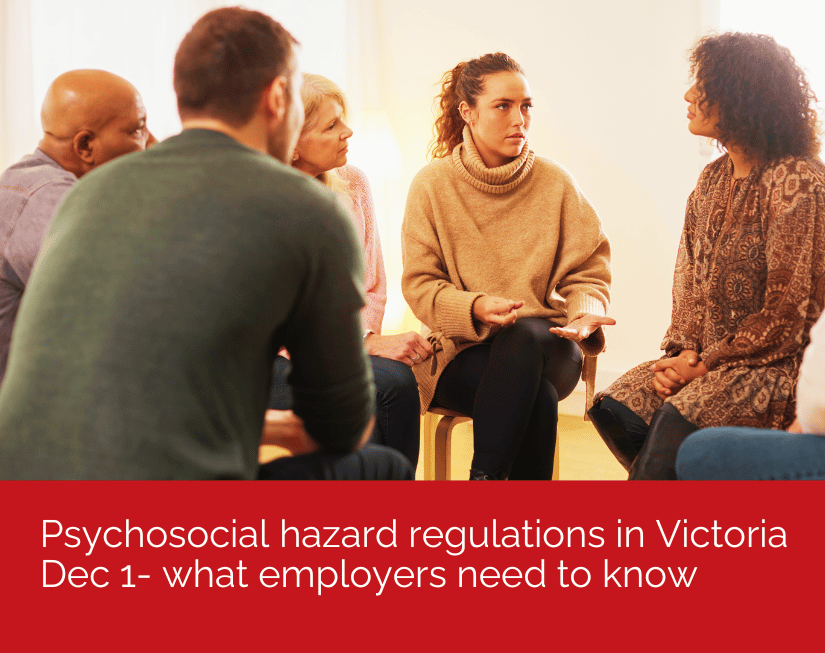
Victoria’s new Psychological Health Regulations effective 1 December 2025 – what employers need to know
The Victorian Government has published the Occupational Health and Safety (Psychological Health) Regulations 2025, which take effect on 1 December 2025. These Regulations require Victorian employers to identify and manage psychological health risks with the same rigour as physical hazards. Psychological health refers to employees’ overall mental wellbeing, while psychosocial risks are the work-related factors that can negatively affect that wellbeing if not properly managed.
What are psychosocial hazards?
Psychosocial hazards are factors in how work is designed, managed, or carried out that can harm a person’s mental health or safety. They can include bullying, aggression, sexual harassment, exposure to violence or trauma, excessive or low job demands, unclear roles, poor support, or unfair change management. Risks may also arise from isolation, difficult relationships, or unsafe environments. Gendered violence and vicarious trauma are also specifically recognised in Victoria’s compliance code materials.
According to Safe Work Australia, workers’ compensation claims for mental stress accounted for 11.5% of all serious claims in 2023–24. The leading causes were harassment and workplace bullying (33.2%), work pressure (24.2%), and exposure to violence and harassment (15.7%), highlighting the ongoing and urgent need for reform in managing psychological health at work.
What do Victorian employers need to do?
The regulations mandate that employers must identify, assess, and control psychosocial hazards, so far as is reasonably practicable. This includes applying a hierarchy of control, prioritising:
- Elimination of the risk
- If not possible, modifying systems of work, job design, or the physical work environment
- Only then, using information, instruction, or training – but not as the sole or primary control unless no other practicable option exists.
How employers can prepare
Although the regulations do not commence until December 2025, employers should prepare by:
- Identifing roles and functions with inherent psychosocial risks -such as high emotional load, tight deadlines, or exposure to traumatic material.
- Consulting with employees and Health and Safety Representatives (HSRs) during hazard identification and when developing controls. This duty also extends to independent contractors (and their employees) for all matters the employer controls.
- Understanding what “reasonably practicable controls” mean for your organisation, taking into account its size, complexity and risk profile.
- Completing or adapt a Prevention Plan using the WorkSafe Victoria template to document identified hazards, controls, and review processes.*
- Updating existing risk-management systems and risk registers to explicitly include psychosocial risks alongside physical hazards.
- Training managers and employees on recognising and responding to psychosocial hazards and understanding their reporting responsibilities.
- Reviewing job design, roles, workload allocation and team structures to identify factors that may create or amplify psychosocial hazards.
- Reviewing HR data and reports (such as absenteeism, staff turnover and grievances) for early indicators of emerging psychosocial risks.
- Strengthening incident-reporting and follow-up systems, ensuring there are clear triggers for review, including when new information emerges, an incident occurs, or systems of work change.
*While prevention plans are encouraged by WorkSafe Victoria, they are not mandatory under the Regulations, however, they recommend their use as a tool to address risks and prevent harm, specific to your nature of work and specific hazards. A documented prevention plan is one of the clearest ways to demonstrate compliance under the regulations.
What inspection and review look like
WorkSafe stated it will be visiting both after incidents or reports, and proactively through targeted industry inspections.
-
If your organisation operates in one of WorkSafe’s prority groups identified in their Mental Health Strategy (health/social assistance, public administration & safety, education & training), you can expect greater focus.
-
Even if you aren’t in those sectors, the duty applies to all employers — so you should assess your exposure to psychosocial hazards and the maturity of your controls now.
-
Documentation of your process (hazard identification, consultation, controls applied, review) will matter significantly when inspectors come calling.
-
Early action demonstrates “maturity and effort” (which inspectors will assess) and inspectors will consider factors such as the business’s size, risk profile and the maturity of the employer’s psychosocial risk-management practices when assessing regulatory response.
If an employer hasn’t taken action (e.g. no prevention plan, training, or consultation), WorkSafe may issue provisional improvement notices (PINS) with strict timelines and in cases of serious or ongoing non-compliance, may escalate to prosecution or financial penalties under the OHS Act.
WorkSafe will undertake both awareness/education activities ahead of commencement and then regulatory action from 1 December 2025 onwards.
Taking early action to align with these Regulations will reduce harm, help employers comply with their legal obligations and create a mentally healthy workplace.
LDN will continue to support employers and leaders with resources, updates, and insights as Victoria implements these important reforms.
